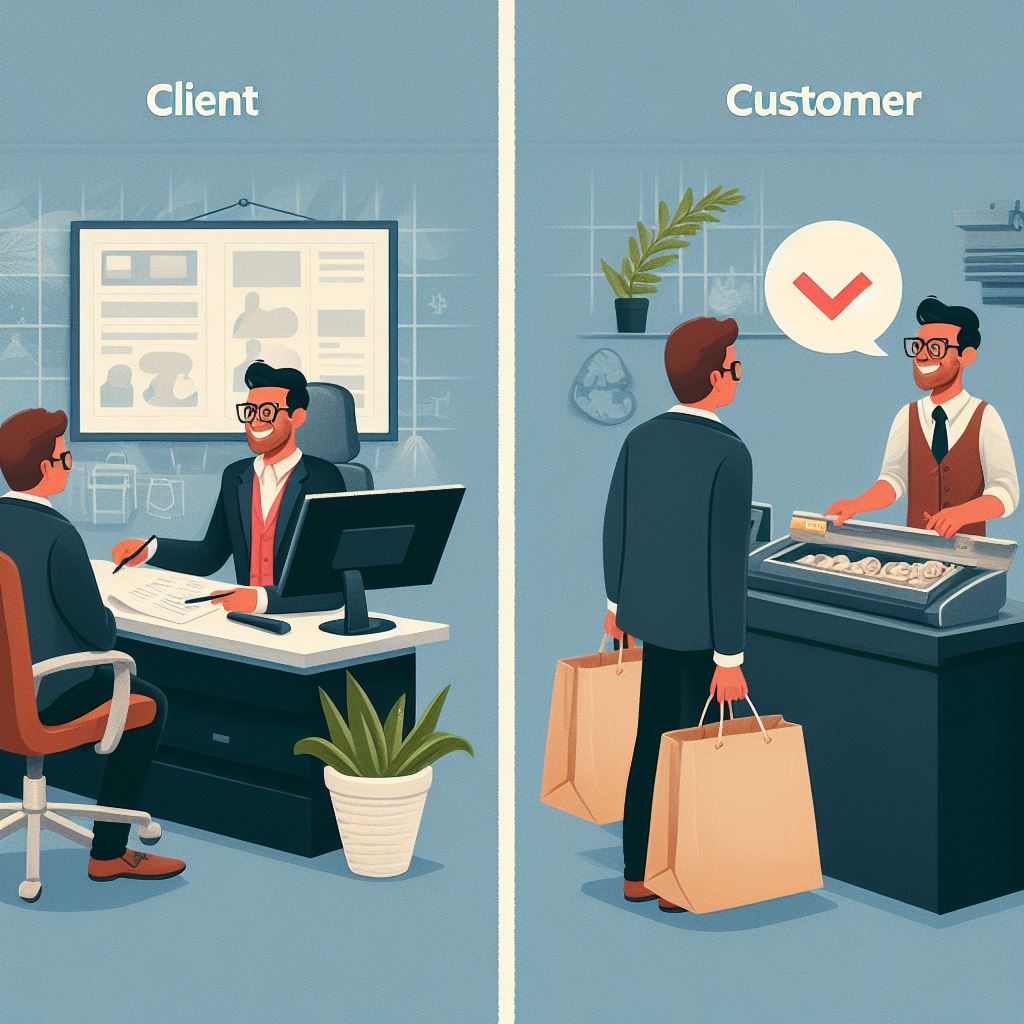In the business world, the terms “client” and “customer” are often used interchangeably. However, there are subtle yet significant differences between the two that every marketing professional, entrepreneur, and student should understand. Recognizing these distinctions can help you tailor your strategies, improve your relationships, and ultimately drive the success of your business.
Defining Clients and Customers
Let’s start with the basics. A customer is an individual or business that purchases a product or service from a company. The relationship between a customer and a business is typically transactional and short-term, focused on a singular purchase or a series of independent purchases.
On the other hand, a client is an individual or business that has a longer-term, ongoing relationship with a company. Clients often receive personalized services, consultation, or advice, and the relationship is characterized by a higher level of trust, loyalty, and collaboration.
Understanding the Distinction
The key difference between clients and customers lies in the depth and duration of their relationship with a business. Customers engage in one-time or sporadic transactions, while clients have a more consistent and long-lasting association.
Customers generally seek products or services to fulfill an immediate need or desire. They might compare prices, features, and reviews before making a purchase decision. Once the transaction is complete, the relationship may end until the next purchase.
Clients, however, often require more extensive support and guidance. They may work closely with a business to develop customized solutions, receive ongoing maintenance or updates, or rely on the expertise of the service provider for decision-making. The relationship between a client and a business is more collaborative and mutually beneficial.
Why It Matters
Understanding the difference between clients and customers is crucial for businesses to effectively meet their needs and expectations. By recognizing the unique characteristics of each type of relationship, companies can develop targeted strategies for marketing, sales, and customer service.
For customers, businesses should focus on providing an excellent product or service, competitive pricing, and a seamless purchase experience. Marketing efforts should highlight the benefits and value of the offering, and customer service should be responsive and efficient in addressing any issues or inquiries.
For clients, businesses must prioritize building trust, demonstrating expertise, and providing personalized attention. Marketing should emphasize the company’s track record, industry knowledge, and ability to deliver tailored solutions. Sales teams should focus on understanding the client’s specific needs and goals, and customer service should be proactive in offering ongoing support and guidance.
Strategies for Engagement
To effectively engage both clients and customers, businesses can implement the following strategies:
- Segmentation: Divide your target audience into distinct groups based on their relationship with your business (clients vs. customers) and tailor your communication and offerings accordingly.
- Personalization: Use data and insights to personalize your interactions with clients, demonstrating your understanding of their unique needs and preferences.
- Value-added content: Provide valuable resources, such as blog posts, whitepapers, or webinars, that address the specific challenges and interests of your clients and customers.
- Loyalty programs: Implement loyalty programs that reward both clients and customers for their continued engagement and advocacy of your brand.
- Feedback loops: Regularly seek feedback from both clients and customers to understand their experiences, identify areas for improvement, and demonstrate your commitment to their success.
Case Studies
To illustrate the importance of differentiating between clients and customers, let’s look at two real-world examples:
- Accounting firm: An accounting firm that serves both individual tax filers (customers) and small businesses (clients) found that tailoring their services and communication for each group led to a 20% increase in customer retention and a 15% increase in client referrals.
- Software company: A software company that offers both off-the-shelf products (for customers) and custom development services (for clients) saw a 25% increase in customer satisfaction and a 30% increase in client project size after implementing targeted engagement strategies for each group.
Conclusion
Recognizing the difference between clients and customers is a critical aspect of running a successful business. By understanding the distinct characteristics and needs of each group, companies can develop targeted strategies for engagement, retention, and growth.
As a marketing professional, entrepreneur, or student, taking the time to grasp these nuances will help you create more effective campaigns, build stronger relationships, and drive long-term success. Assess your current strategies and consider how you can better cater to the unique needs of your clients and customers.
Remember, the key to thriving in today’s competitive landscape is to deliver value, build trust, and adapt to the evolving expectations of your target audience. By mastering the art of client and customer engagement, you’ll be well on your way to business success.
Want to convert those clients into customers? Let me make a stunning website for you. Let me make the best business website for you, or you can hire me to write content for your website.


